1. Times Square on New Year’s Eve Is a Sparkly Mad House

If you’ve ever wondered what one million people in one place looks like, head to Times Square on December 31. The iconic New Year’s Eve ball drop began in 1907 and has become a global symbol of celebration, according to Jacqui Palumbo from CNN. The ball itself is a 12-foot geodesic sphere covered in 2,688 Waterford crystals and weighs nearly 12,000 pounds. That’s not a party favor—that’s an engineering marvel.
Despite the freezing temperatures and the fact that you have to arrive hours early just to snag a spot, the atmosphere is pure electricity. Celebrities host, fireworks explode, and confetti rains down by the ton. The whole event is watched by over a billion people worldwide. Leave it to America to turn the end of a calendar page into a glitzy international spectacle.
2. Halloween in Salem, Massachusetts Is a Whole Lifestyle

Salem doesn’t just celebrate Halloween—it basically is Halloween, according to Haley Lyndes from Popsugar. Every October, this historic town, known for the infamous 1692 witch trials, transforms into a full-blown festival zone. There are psychic fairs, haunted houses, ghost tours, and costume balls, all culminating in a massive street party on Halloween night. Over 500,000 people visit during the month of October alone.
It’s a holiday meets historical tourism hybrid that only America could perfect. Even the local police wear special witch-themed patches during the season. For Salem, Halloween is less of a spooky night and more of a booming month-long industry. If you’re looking for proof of how far the U.S. will go to celebrate a holiday, Salem’s got you covered in fog machines and fake cobwebs.
3. The Macy’s Thanksgiving Day Parade Floats Into Our Hearts
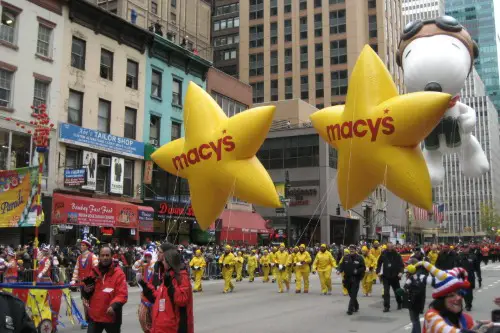
Every year on Thanksgiving morning, millions of Americans tune in to watch massive cartoon character balloons drift through Manhattan, according to Michael Callahan from Smithsonian Magazine. From Snoopy to Pikachu, these inflatable giants have become as essential as turkey and stuffing. The Macy’s Thanksgiving Day Parade dates back to 1924, making it one of the oldest holiday parades in the U.S. And yes, it originally featured live animals from the Central Park Zoo—talk about a wild beginning.
It’s not just the floats that make this so over-the-top—it’s the full Broadway numbers, celebrity performances, and Santa Claus making a grand finale entrance. The entire thing is broadcast live to an audience of over 20 million viewers. That’s not a parade, that’s a production. Only in America would a department store sponsor a holiday spectacle that basically counts as a national event.
4. The White House Easter Egg Roll Is Presidential Pastel Chaos
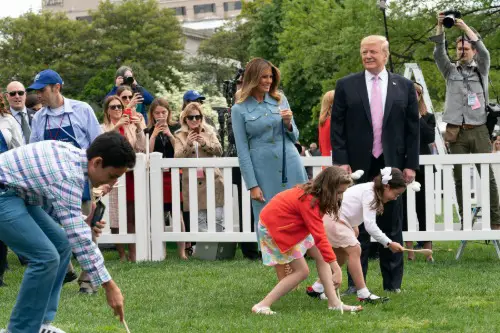
Dating back to 1878, the White House Easter Egg Roll is one of the most charmingly American traditions around. Every year on Easter Monday, thousands of children gather on the South Lawn to push colorful eggs with wooden spoons, Talia Lakritz, Megan Harney, and Ellen Cranley from Business Insider explain. It’s been hosted by nearly every president since Rutherford B. Hayes, and it’s grown into a full-on festival. We’re talking costumed characters, storytelling, and live music—right in the president’s backyard.
It’s not just a simple game anymore—it’s a highly choreographed, ticketed event that draws families from across the country. Past guests have included celebrities, athletes, and even NASA astronauts. Where else could a child roll a pastel egg across the most powerful lawn in the world while being cheered on by First Lady Elmo? That’s peak American holiday extra-ness.
5. Fourth of July in Washington, D.C. Is Fireworks and Founding Fathers
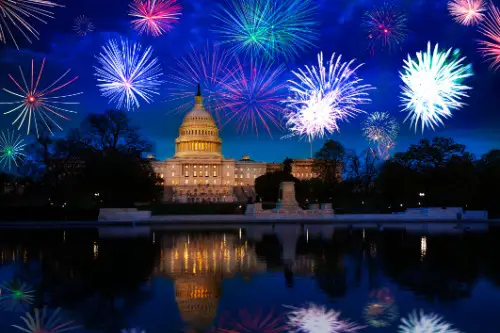
Independence Day anywhere in the U.S. is already a pretty big deal, but in D.C., it’s next-level patriotic. The National Mall hosts a massive concert called “A Capitol Fourth,” followed by fireworks that light up monuments like the Lincoln Memorial and the Washington Monument. Crowds gather with blankets, flags, and way too much potato salad to celebrate the nation’s birthday. It’s red, white, and boom at its most iconic.
The concert features big-name artists and the National Symphony Orchestra, because of course it does. Planes fly overhead in formation, and military bands play marches like it’s 1776 all over again. It’s so epic, it’s broadcast live on PBS and streamed around the world. Only America would combine history, music, and explosions in such a bold, star-spangled way.
6. Christmas in New York Is Basically a Hallmark Movie

From the Rockefeller Center tree lighting to the elaborate department store window displays, New York City goes hard for Christmas. The Rockefeller tree has been a tradition since 1931, and today it features over 50,000 multicolored LED lights. There’s also the Saks Fifth Avenue light show, the Bryant Park holiday market, and the Radio City Christmas Spectacular starring the Rockettes. Every square inch of Midtown looks like it was gift-wrapped in tinsel and nostalgia.
Tourists flock in by the millions, skating at Rockefeller Plaza and taking selfies under giant ornaments. The city that never sleeps somehow becomes even more dazzling in December. It’s chaotic, expensive, and completely magical. If Christmas had a capital city, NYC would win in a glittery landslide.
7. Las Vegas Does Valentine’s Day Like a Rom-Com on Red Bull

Valentine’s Day in Las Vegas is a high-octane love fest, where you can get married by Elvis, renew your vows in a helicopter, or dine in heart-shaped bathtubs. The city’s 50+ wedding chapels see a massive spike in activity on February 14. In fact, Las Vegas is one of the most popular wedding destinations in the world, with thousands tying the knot every V-Day. It’s not just a holiday—it’s a full-blown commitment celebration, Vegas-style.
Hotels roll out themed packages that include rose petals, champagne fountains, and even fire-breathers if you’re into that sort of thing. It’s a place where “over-the-top” is the minimum requirement. Sure, love is universal—but Vegas turns it into a production. Because nothing says “forever” like a pink Cadillac and a feather boa.
8. Mardi Gras in New Orleans Is Beads, Brass, and Bedazzled Madness
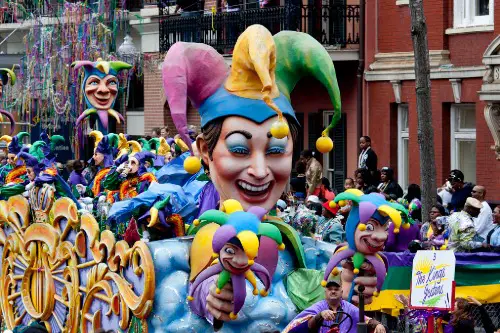
New Orleans takes Fat Tuesday and stretches it into an entire season of revelry. Mardi Gras season starts on January 6 and doesn’t stop until the day before Ash Wednesday—weeks of parades, balls, and bead-throwing insanity. Each parade is hosted by a “krewe,” and many build jaw-droppingly elaborate floats for their processions. The costumes, the music, the masked mystery—it’s like a historical costume drama with a dance party twist.
The city hosts over 70 parades during the season, and the celebration draws over a million visitors each year. King Cake, brass bands, and street performers make every day feel like a holiday. And yes, flashing for beads is a thing—but it’s only a sliver of what Mardi Gras really is. When it comes to all-in holiday traditions, NOLA doesn’t just show up—it parades in with a marching band.
9. The Kentucky Derby Is Basically a Spring Holiday in a Fancy Hat

The first Saturday in May brings us the “fastest two minutes in sports,” but the Kentucky Derby is about so much more than just horse racing. It’s a Southern-style holiday complete with mint juleps, pastel suits, and the most extravagant hats you’ll ever see. Held at Churchill Downs since 1875, the Derby has evolved into a multi-day celebration with a massive infield party, celebrity sightings, and elaborate tailgating. It’s like Easter Sunday and Mardi Gras had a stylish baby.
There’s even a Kentucky Derby Festival leading up to the race, featuring events like steamboat races and hot air balloon shows. Fans wager millions, while fashionistas turn the grandstands into a runway. The whole thing is televised to millions, turning one race into a cultural event. Leave it to America to transform a horse race into a springtime extravaganza with a side of bourbon.
10. Black Friday Is a Capitalist Holiday Unto Itself

The day after Thanksgiving, Americans wake up at dawn (or just stay up all night) to hunt for doorbusters and 70% off everything. Black Friday has become a retail ritual so intense, some people treat it like a competitive sport. It started in the 1950s in Philadelphia but blew up nationally in the ’80s and ’90s, eventually turning into a multibillion-dollar event. People literally camp outside stores for TVs and stand mixers.
There are strategy guides, apps, and Reddit forums dedicated to planning your shopping route. It’s chaotic, absurd, and undeniably American in its passion for a good deal. And even though online shopping has taken over in recent years, the spirit of Black Friday is still going strong. Because only in America could a day of gratitude be immediately followed by a consumer frenzy.
11. The Superbowl Is Basically a National Holiday Without the Day Off
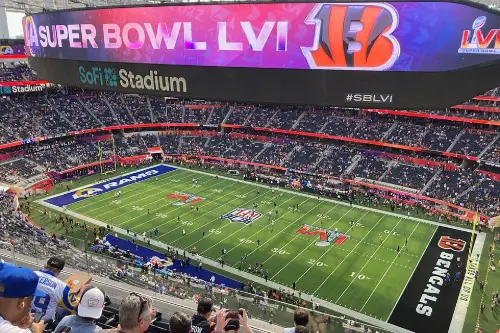
It’s not officially a holiday, but tell that to the 100 million Americans who plan parties around the Super Bowl. Held every February, it’s the most-watched TV event in the U.S.—and not just for football. The halftime show often outshines the game itself, with performances from icons like Beyoncé, Prince, and Rihanna. Then there are the commercials, which cost around $7 million for 30 seconds and become events in their own right.
Super Bowl Sunday means wings, nachos, and nacho-cheese-fueled screaming at the TV. Offices see lower productivity the next day, and there’s been talk of making the Monday after an actual holiday. It’s not just a game—it’s a cultural juggernaut. Only in America could a single football game shut down the entire country for a day.
12. Groundhog Day in Punxsutawney Is Adorably Ridiculous
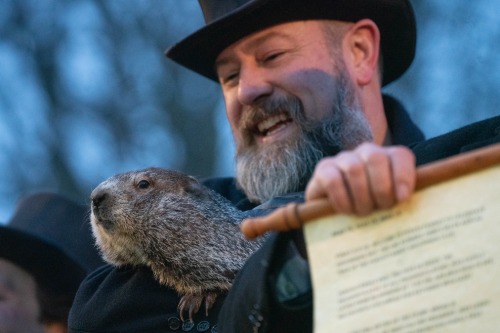
Every February 2, the tiny town of Punxsutawney, Pennsylvania becomes the focus of a bizarre, charming tradition involving a rodent named Phil. Groundhog Day has roots in ancient weather lore, but the modern spectacle is pure Americana. Dressed in top hats and tuxedos, the Inner Circle “consults” Phil to see if he saw his shadow. If he does, it’s six more weeks of winter—if not, spring is on its way.
The event draws tens of thousands to a town that usually only houses about 6,000. It’s been nationally recognized since the 1800s, but the 1993 Groundhog Day movie launched it into the pop culture stratosphere. It’s silly, it’s charming, and it’s exactly the kind of quirky tradition that Americans fully embrace. Because what better way to deal with winter than with a forecasting marmot?
13. Christmas Light Displays in Neighborhoods Go Full Clark Griswold

Suburban America doesn’t play around when it comes to decorating for Christmas. Entire neighborhoods compete for who can be the most lit—literally. Some go so far as to sync their lights to music using complex programming and thousands of dollars in gear. The “Miracle on 34th Street” effect becomes a reality in cul-de-sacs from California to Connecticut.
There are even national contests for the best displays, like ABC’s The Great Christmas Light Fight. Traffic jams form just so people can drive through these winter wonderlands. And let’s not forget the electric bills, which some families wear like a badge of honor. It’s festive, flashy, and so very, very American.
14. Presidents’ Day Mattress Sales Are an Unlikely Tradition We Totally Own

Technically, Presidents’ Day is meant to honor George Washington and Abraham Lincoln, but let’s be real—it’s also known for mattress deals. The tradition of holding sales on this February holiday started in the 1980s as a retail marketing strategy. Now, you can’t scroll the internet or turn on your TV without being offered 40% off a memory foam bed. Somehow, honoring the nation’s founders turned into a long weekend of buying appliances.
And yes, it’s a little ridiculous—but it works. People plan big purchases around Presidents’ Day just like they do for Black Friday. The combination of patriotism and capitalism is, in a way, uniquely American. Because if there’s one thing this country knows how to do, it’s turn anything into an event—especially if there are savings involved.


